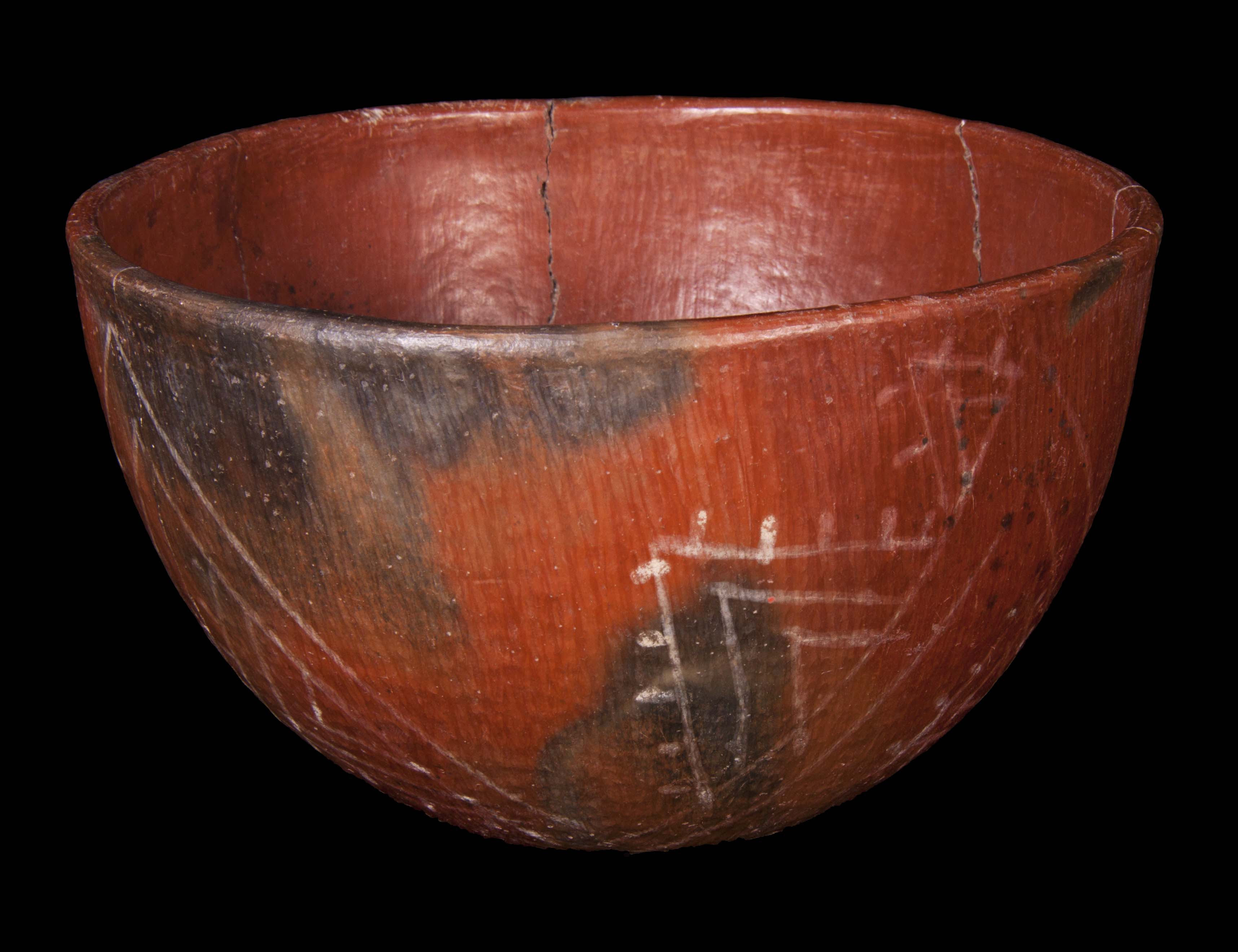
Tuzigoot White-on-red bowl, Tuzigoot National Monument. Click the image to open the Tuzigoot White-on-red gallery.
Tuzigoot White-on-red is the decorated type of Alameda Brown Ware found in the Upper Verde Valley drainage, from Beaver Creek to at least Sycamore Canyon, and down to the Prescott area, Arizona.
Archaeological Culture: Sinagua
Date Range: A.D. 1300-1425.
Construction: By paddle and anvil.
Firing: In an oxidizing atmosphere; fire clouds frequent.
Core Color: Reddish, pinkish, or yellow-buff.
Carbon Streak: Occasional.
Temper: Medium fine quartz or feldspar sands, opaque angular fragments (reddish, tan, gray, or black), and occasional micaceous particles.
Surface Finish: Smoothed; often compacted and polished; often smudged; sometimes gritty, with horizontal scraping marks visible but not conspicuous; jars sometimes have a thin slip on the exterior surface; jar interiors are not smoothed and have conspicuous anvil and scraping marks.
Surface Color: Brick-red to black; jar exteriors brown or brick-red; jar interiors purplish, tan, or reddish.
Forms: Jars and bowls..
Vessel Thickness: 3.2 to 8 mm.
Decoration:
- Paint: White.
- Pigments: Kaolin.
- Design: Jar and bowl exteriors, and bowl interiors: medium to wide parallel lines, pendent dots, groups of large dots, irregular meanders, and zigzags. Execution is generally poor.
Comparisons: The temper of Turkey Hill White-on-Red is predominately opaque angular fragments with very little quartz sand, the core texture is usually coarse, and the vessel walls average thicker. Bowl interiors are almost always smudged and well-polished.
Compiled from the following sources:
Colton, Harold. (1958) Pottery Types of the Southwest. Museum of Northern Arizona Ceramic Series No. 3D. Flagstaff, Arizona.
Jackson, Earl, and Sallie Pierce van Valkenburgh. (1954) Montezuma Castle Archeology, Part 1: Excavations. Southwestern Monuments Association Technical Series Vol. 3, No. 1. Gila Pueblo, Globe.
Compiled by:
Meghann M. Vance, Northern Arizona University Anthropology Laboratories.
